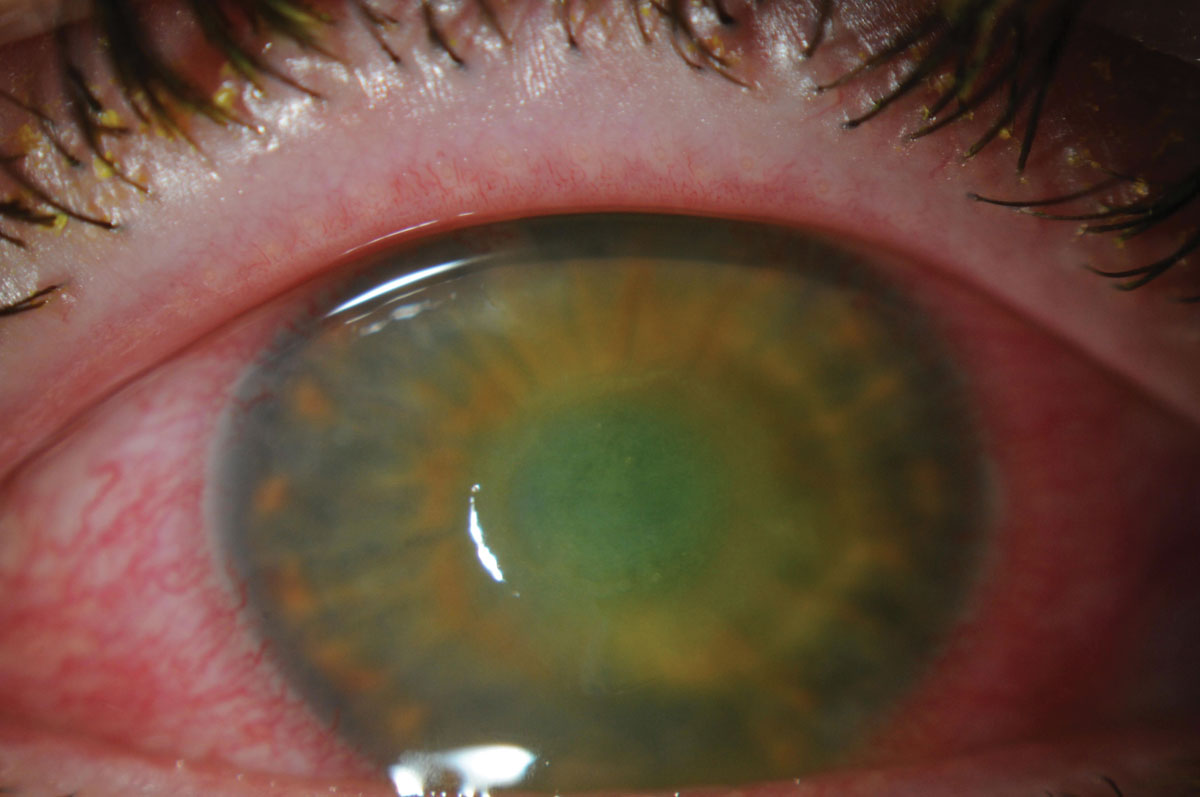 |
| A total of 43 bacterial keratitis isolates were evaluated for their antibiotic resistance and susceptibility to the novel drug combination of polymyxin B/trimethoprim with rifampin. The study demonstrated the drug’s ability to eliminate all of the isolates tested, even the ones classified as multidrug-resistant. Click image to enlarge. |
Due to increasing antimicrobial resistance across the world, researchers are exploring treatment alternatives, including for those for corneal infections. For instance, among the isolates that cause bacterial keratitis, Staphylococcus aureus and Pseudomonas aeruginosa contribute to more than half of cases, yet the top-line treatment against them, fluoroquinolones (moxifloxacin), is becoming less effective, particularly in India.
A new study evaluated the in vitro efficacy of the novel combination of polymyxin B/trimethoprim (PT) + rifampin for bacterial keratitis and found it successfully eliminated all 43 isolates tested, even those which conferred multidrug-resistance (MDR). Among the 43 isolates were 20 S. aureus, 10 P. aeruginosa, three Pseudomonas stutzeri and one Acinetobacter baumannii, all of which were evaluated for their antibiotic resistance by minimum inhibitory concentration. PT + rifampin inhibited the growth of all isolates while also displaying additive or synergistic activity in approximately 70% of the strains.
Historically, PT has been used for the treatment of mild bacterial conjunctivitis, but it has limited application for bacterial keratitis in the case of MDR due to its lower potency and inadequate bioavailability in corneal tissues. This led to the study authors’ hypothesis that the repurposing of PT eye drops specifically in the case of MDR P. aeruginosa and S. aureus infections would be advantageous. Combined with rifampin, which has shown inhibitory potential against cases of MRSA, researchers believed each component offered broad-spectrum activity against both gram-negative and gram-positive organisms, resulting in a lower chance of developing resistance.
“Two of our recent studies evaluating the synergistic potential of the PT + rifampin combination against 154 and 163 ocular isolates of P. aeruginosa and S. aureus from North America and Europe have shown 100% elimination of organisms, with .90% of the tested isolates exhibiting synergistic/additive effects,” said the authors. “In line with their findings, our study has shown the synergistic/additive effects in .70% of the tested isolates with 100% elimination of organisms. The slight differences in findings between studies may be due to the higher percentage of MDR strains used in this study as well as the geographical variation of the isolates.”
The authors note this study included only a moderate number of isolates, and a wider range of bacterial keratitis species might further ascertain its antibacterial coverage. “Considering the wider coverage against virulent and major bacterial keratitis strains, the studied drug combination of PT with rifampin may have a potential in becoming the empirical gold-standard treatment against MDR bacterial keratitis in the future with further studies,” they concluded.
Gowtham L, Wozniak RAF, Dunman PM, Sheba E, Garg P, Joseph J. Efficacy of a novel antibiotic drug combination toward multidrug-resistant ocular pathogens. Cornea. March 26, 2024. [Epub ahead of print]. |


